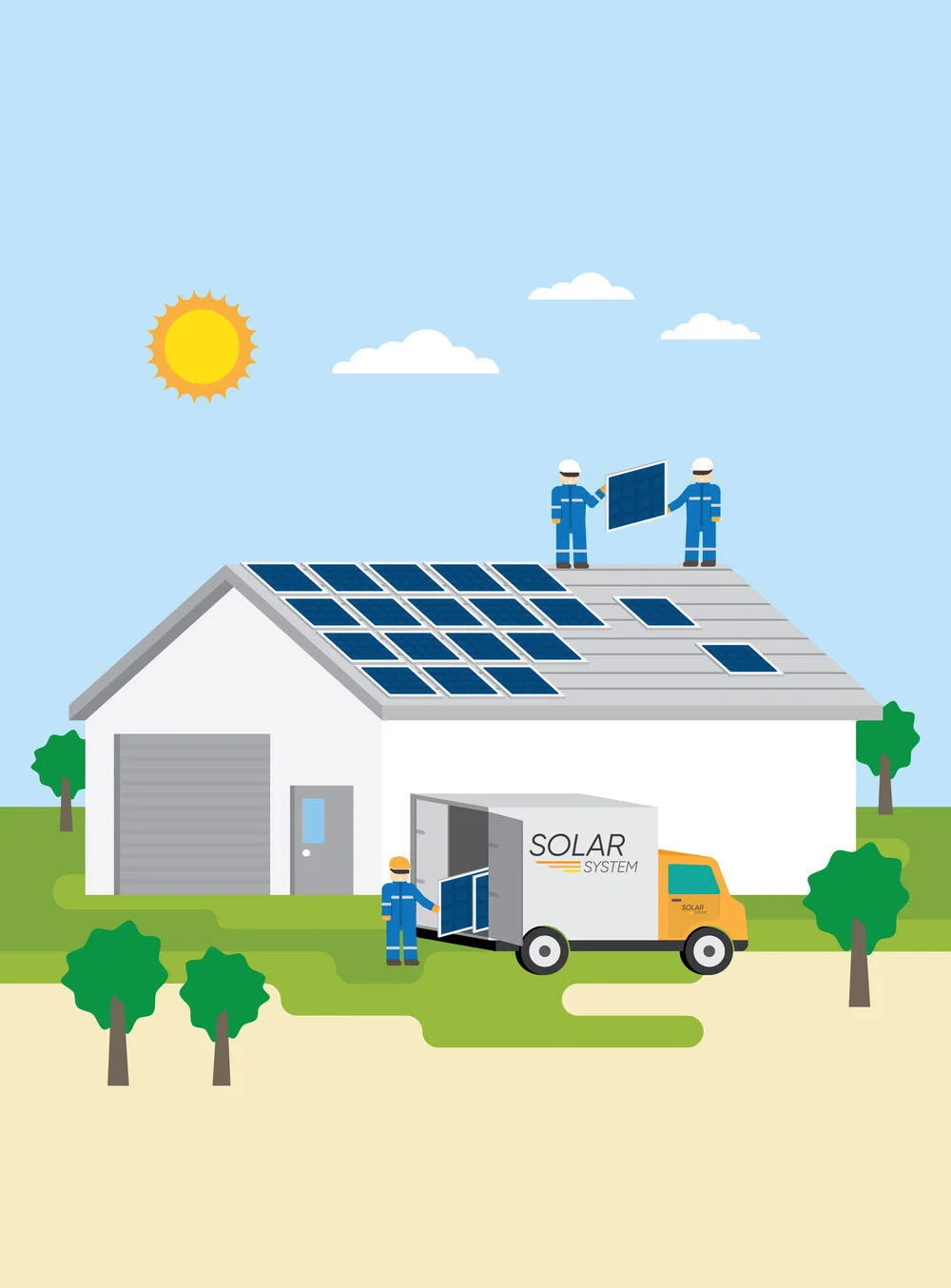- + 91 9650 728 179
- hello@evaskaenergy.com
Solar rooftop technology is the most impressive and promising for producing clean energy. When the sun's rays fall on a solar module installed on the roof of a home, commercial building, or industrial building, the individual cells inside the module assist in converting the sunlight into direct current electricity. Rooftop solar technology works by capturing solar energy and converting it into electricity, which is then used to power individual buildings. Sun panels are made up of photovoltaic cells, which are designed to convert sun rays into electricity. The electricity generated in the cell is sent to an inverter that transforms it to alternating current (AC). Excess electricity is stored in batteries or returned to the grid for later use. You can get the best solar panel setup for home at Evaska Energy.
It is critical to know that you can use the electricity generated by your rooftop solar power plant in combination with the electricity generated by your DISCOM. These kinds of setups are fairly prevalent and are handled expertly by solar installers. In this scenario, an industrial solar system is more capable. However, if you want to go with a system that is backed by a battery and helps you with solar at night, a hybrid or off-grid system is a great option. You can go for Evaska Energy's low-cost solar panel kits for home.
Those places which is delay in the net metering or no net metering facilities can easily opt for the zero export device (Z.E.D) and stated saving on their huge electricity bills from day 1 itself. Bring Evaska Energy’s solar system for home today.
Those areas where there is a delay in net metering or no net metering facilities can easily opt for the zero export device (Z.E.D) and begin saving on their massive power bills from day one. Bring Evaska Energy’s solar panel system for home now.



It is a grid-connected solar power plant that uses the electricity grid as a primary source and needs no battery backup for storing excess energy. It is comparatively a more cost-effective form of the solar power plant.

It is a solar plant which has the capability to store excess electricity inside the batteries. The inverters used in these systems differ also they have batteries in extra which can provide backup for somewhere between 8 to 10 hours. Also, it is comparatively expensive than ON Grid Solar Plant.

They are somewhat similar to Hybrid Solar Plant but the main difference is they are installed in places with no Grid support and are known as stand-alone system with extra batteries and a longer back up time period.